What is a Digital Smile Design?

Smile design
Can you predict the future? In a sense, yes. Patients are now able to see how their smile will transform before they decide to start cosmetic dental treatment.
This is possible thanks to the Digital Smile Design method, which makes it possible to create a very detailed treatment plan that facilitates mutual cooperation and communication between the doctor and the patient. This method makes it possible to precisely record all guidelines that are very helpful for the team of specialists working on the transformation. The patient can follow the whole process and actively participate in creating their dream smile, and most importantly, see the expected effect before deciding whether to start treatment.
How does DSD work?
The Digital Smile Design Process
Smile design starts with collecting the necessary materials and a thorough review of the teeth. A photo session is conducted to capture all the features of the patient’s smile with digital photographs. In some cases, it is advisable to record a short film that shows the patient’s facial expressions while displaying various emotions. The most important element of correct planning using DSD is a detailed interview with the patient that discusses their own ideas of beautiful appearance. The doctor gets to know the patient’s personality in order to fully match the possible solutions to these aesthetic expectations.
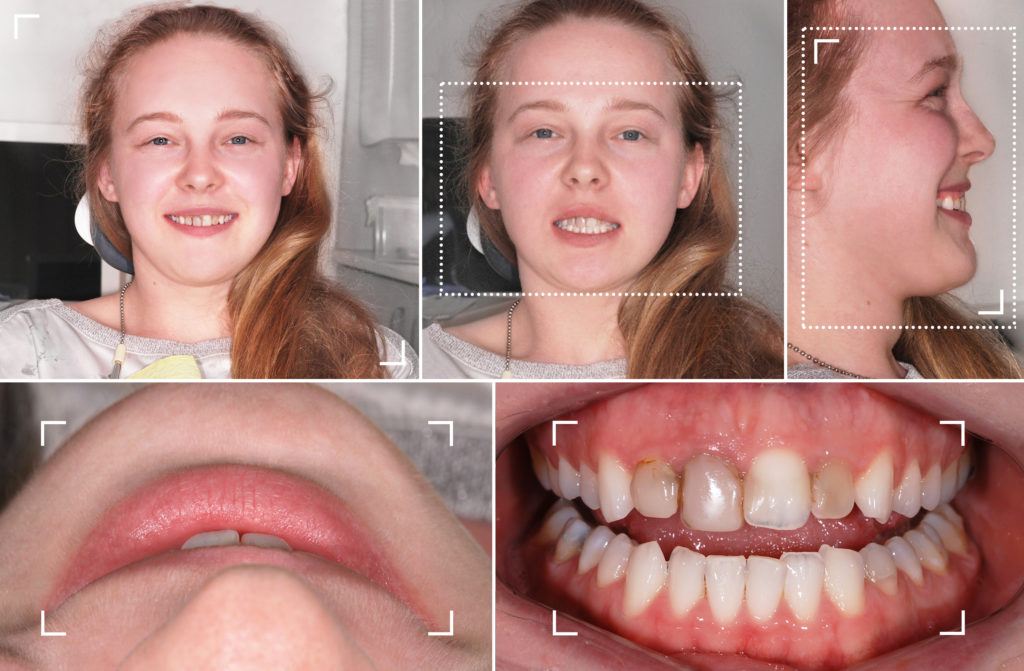
digital documentation
Designing, or 'tailoring’
Using photographs as a basis, a graphic design is created, which is a key element of further work. The project includes:
- portrait photos of the face,
- profile photos of the face,
- intraoral images,
- tomography,
- X-ray.
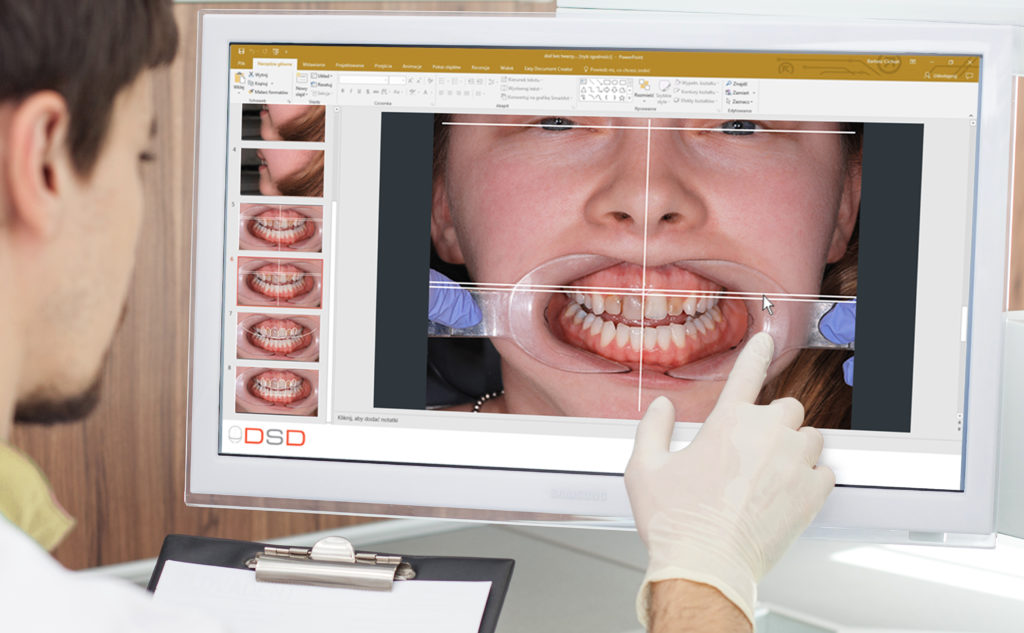
Choosing the right shot
Designing is carried out digitally directly on the patient’s selected photo. The specialist takes into account the proportion of the face, facial expressions, mouth, teeth, gums and lips, which are all necessary to preserve the personal, natural features of the patient.
Reference lines are introduced to determine the symmetry of the face and mouth, and thus reveal disharmonies which require improvement.
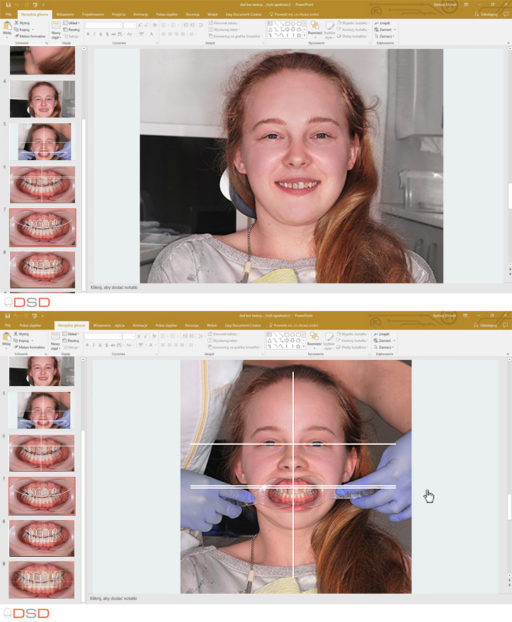
INTRODUCTION OF reference lines
The Digital Smile Design method makes it possible to manipulate the target shape, length, structure and colour of the teeth in the digital version, which eliminated the need for corrections at the prosthetic stage. If design is carried out during a patient’s visit, the doctor can consult with them on a regular basis. Digital Smile Design is a completely personalized experience for each patient, active participation in this process offers maximum satisfaction.
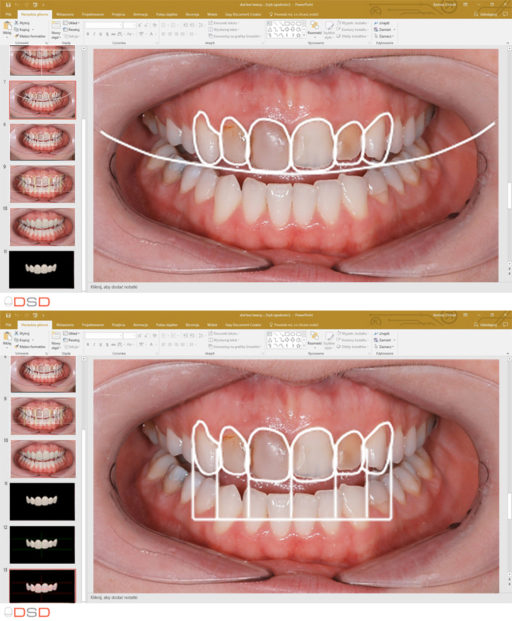
TEETH shape DESIGN
Using digital rulers, precise measurements and quantitative estimation of aesthetic imperfections are carried out. The collected data is useful to the entire interdisciplinary team (in some cases, several specialists work on the transformation, such as: dental prosthetist, implantologist and periodontist). The final stage is to generate a virtual 2D provisional overlay showing the expected effect.
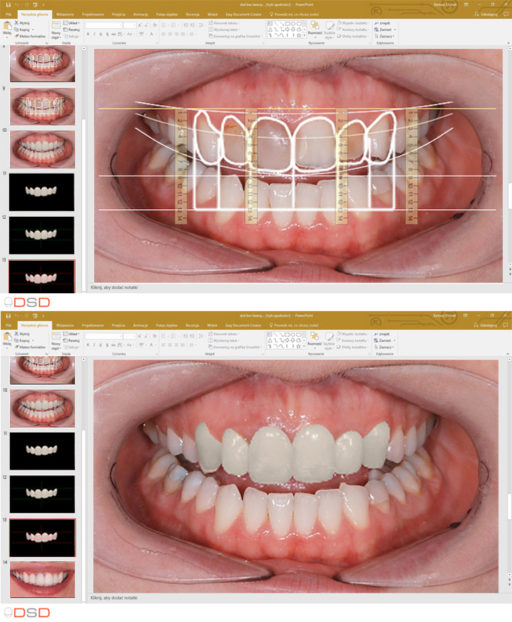
virtual provisional overlay generation
After the dentist takes impressions of the jaw, the project moves on to a technician who transfers measurements from the DSD protocol to a plaster cast and applies wax to shape the model according to the guidelines, known as a buccal diagnostic wax-up.
The final stage of Digital Smile Design is the fitting of the personal provisional overlay (known as a silicone index) prepared by the technician. The dentist moves the model directly to the patient’s teeth and fixes it on the temporary work resin. Again, photos and a short video are taken to confirm the appropriateness of the project. During an attempt to smile, the patient discovers their new look, which causes a lot of positive emotions. Unhampered joy testifies to the effectiveness of the method.
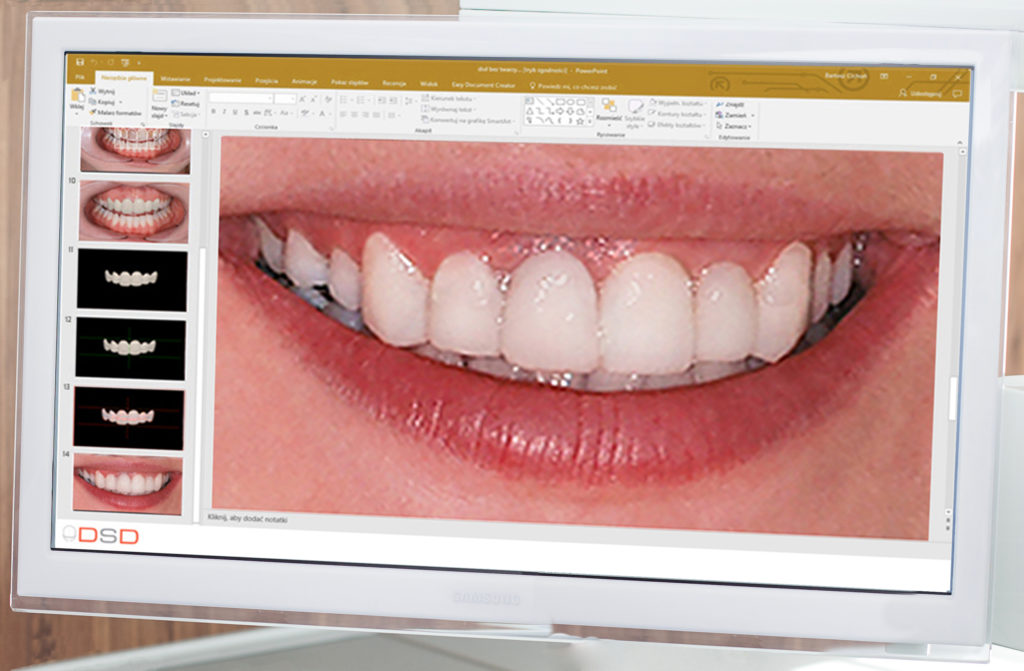
photo with try-in provisional
Dream metamorphosis
A beautiful smile is our showcase, it adds self-confidence and affects relationships with people. Sometimes a smile transformation changes the perception of one’s own image and is a prelude to the overall metamorphosis of the patient.



Metamorphosis stages with DSD
Dominika, a patient at Cichoń Dental Centre, has transformed herself from a modest and quiet young lady into a confident, very feminine and charming person. She came to Cichoń Dentistry for only basic treatment because she did not know yet what cosmetic dentistry could do for her. Thanks to Digital Smile Design she saw the effects before the change even began. However, by the end of the treatment the results of the team’s effort exceeded all expectations.

Before and After smile transformation
Interestingly, the smile transformation has led to even more changes in Dominika’s life.

Changing style, way of being and self-confidence
Frequently asked questions
Who developed the DSD method?
The creator of the Digital Smile Design method is a Brazilian technician and dentist – Christian Coachman. His intention was to strengthen treatment diagnosis and improve communication between doctor and patient.
What is the buccal wax-up diagnostic?
The buccal diagnostic wax-up is a ‘design’ of a new tooth shape performed by a dental technician on a plaster cast of a patient’s teeth. In the DSD process, the wax-up is also used to prepare a silicone tooth model, which the patient can try on and see the predicted effect of aesthetic treatment.
What is the silicone index?
The silicone index (mock-up) is a prototype of a new smile that takes the form of a tooth provisional overlay. The patient tries it on to see the predicted effects of treatment and to accept the shape of the prosthetic work.










